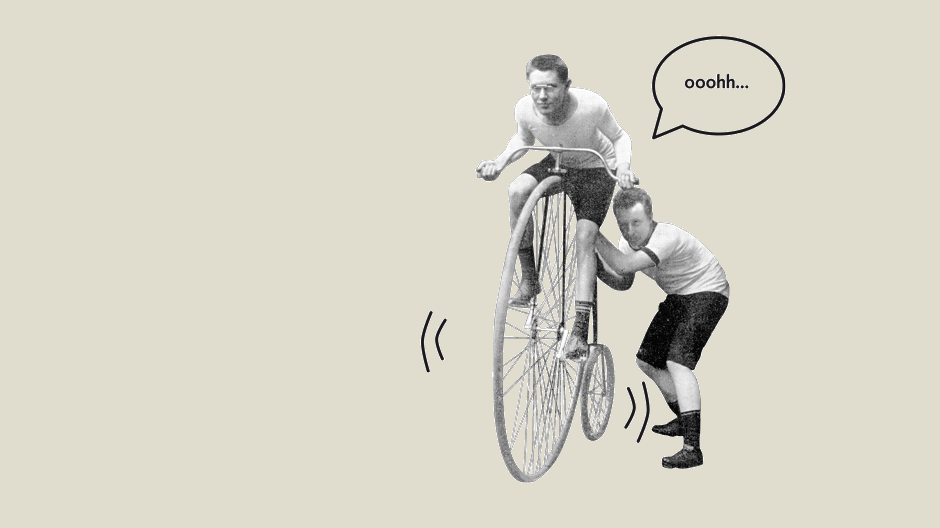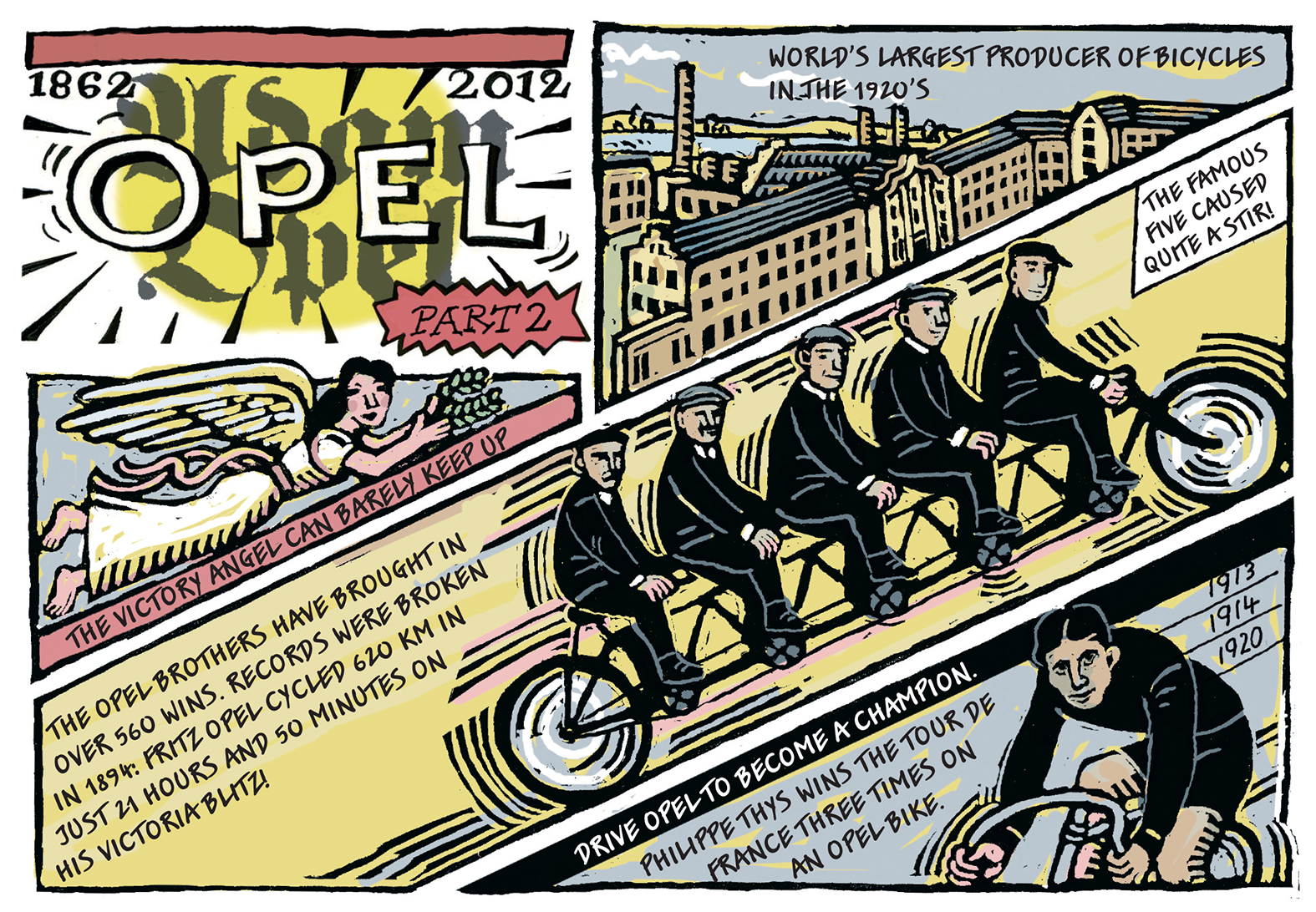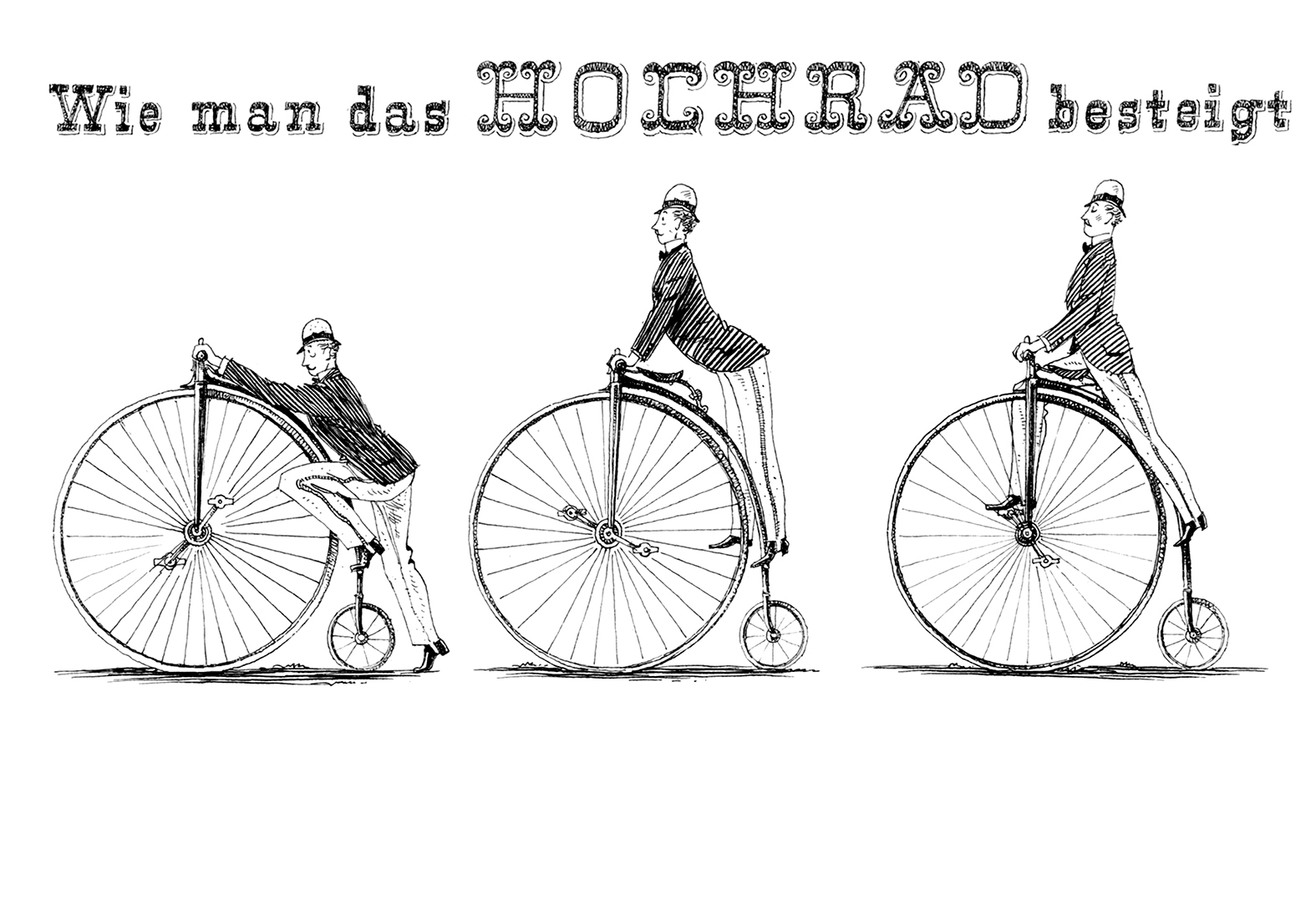- Die Fahrradproduktion in Rüsselsheim im Jahr 1927. Der jüngste Sohn, Ludwig Opel, war bei Weltmeisterschaften erfolgreich (Bild von 1898)
- Anzeige
- Anzeige
For Christmas back in 1885, Adam Opel gave his sons – Carl, Wilhelm, Heinrich, Friedrich, and Ludwig – a velocipede for Christmas, thus sowing the seed for Opel’s subsequent production of bicycles. Adam Opel had come across this novel invention during an earlier trip to Paris, where two wheels were already a feature of street life. On domestic soil, he preferred to carry out the first test ride of the penny farthing or high wheel bicycle himself – and promptly fell off, ending up in the ditch. The Christmas gifts were then seen as potentially dangerous and were sold off immediately. All the same, the money he made from the sale convinced him of the financial potential of this new mode of transport.
A few months later, in the spring of 1886, the first high wheeler left the factory and the range of products expanded quickly. Alongside the high wheelers, which required considerable acrobatic skill on the part of the rider in order to get on and off, low wheel ‘safety bicycles’ and three-wheelers were also produced. The first advertisement in December 1887 extorted the virtues of the new invention for leisure purposes: “Anyone can enjoy the pleasure of riding a bicycle regardless of age and standing. The three-wheeler allows even ladies and elderly gentlemen to partake in healthy recreation. Riding is equally invigorating for body and soul.”
largest bicycle manufacturer
The large fire at the factory in 1911 brought about the end of sewing machine production. Production of bicycles, however, expanded. By 1923, Opel had become the largest manufacturer of bicycles in the world. Over 15,000 stores were selling bicycles made at Rüsselsheim. At the height of bicycle production and after the introduction of the assembly line in the middle of the 1920s, one bicycle left the factory every seven seconds.
As the market leader, Opel even had its own racing squad and a plant riding team. Riders on the yellow and black racing bikes were among the favorites to win all the big races. Even three-time winner of the Tour de France, Philippe Thys from Belgium, relied on bicycles from Rüsselsheim in his victories. Opel’s future, however, did not lie in bicycles but in cars. On February 15, 1937, the last bicycle left the assembly line. One year before the company’s 75th anniversary and after 2.6 million bicycles had been manufactured, the company sold its bicycle production division to the German bicycle and car manufacturer NSU and turned its attention fully to cars.
High wheel bicycles were characterized by their overly large front wheel. The pedals attached to the large wheel enabled this novel vehicle – commonly known as the ‘boneshaker’ – to be propelled forward. Getting on the bicycle was quite an art. Those who mastered the technique put one foot on the tiny rear wheel, pulled the other leg back to then swing themselves onto the saddle. Adam Opel’s first attempt was not a success: Trying one of the high wheelers that he had given to his sons for Christmas he ended up in the ditch on the side of the street.







